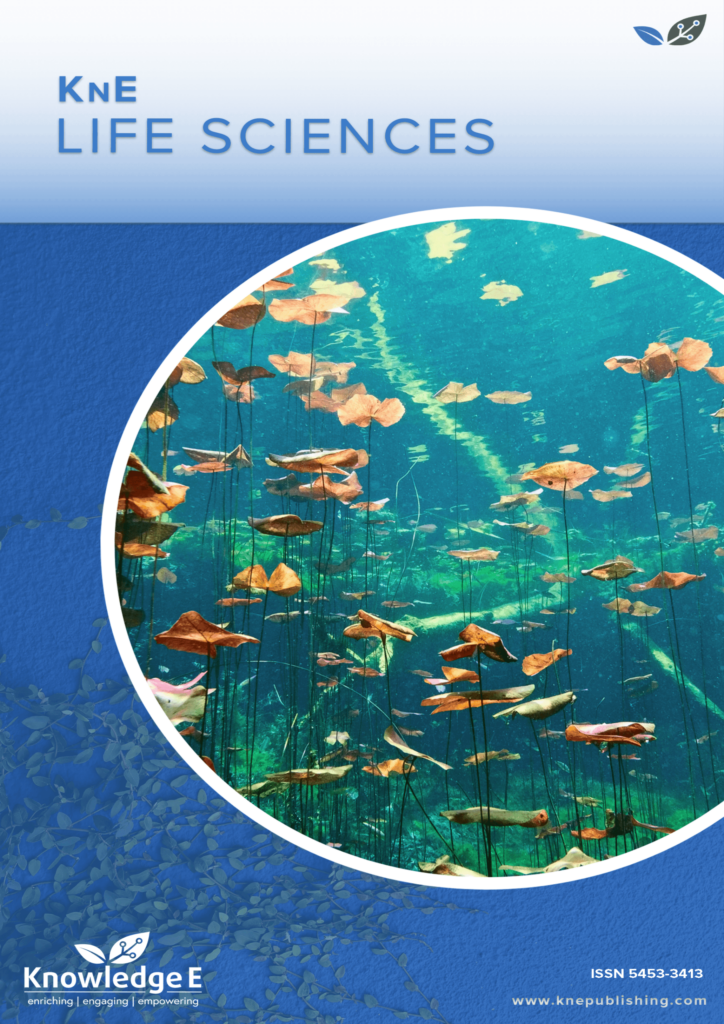
KnE Life Sciences
ISSN: 2413-0877
The latest conference proceedings on life sciences, medicine and pharmacology.
Hyperferritinemia and Other Factors Related to Glomerular Injury in Beta-Thalassemia Major
Published date: Mar 25 2019
Journal Title: KnE Life Sciences
Issue title: The 1st International Conference on Health, Technology and Life Sciences (ICO-HELICS)
Pages: 193–205
Authors:
Abstract:
Beta-thalassemia major (BTM) is a hereditary hemoglobinopathy, characterized by anemia, increased free radicals and iron overload which can lead to hyperferritinemia, glomerular injury, and kidney dysfunction. This research aimed to analyze the association between hyperferritinemia and urinary podocalyxin (uPCX) as the indicator of glomerular injury in BTM. This retrospective cohort study was conducted on 60 BTM patients aged ≤18 years who came to the pediatrics unit of Dr. Moewardi Hospital Surakarta from April to May 2017. The data were analyzed to determine relative risk and 95%CI for each variable, followed by multivariate analysis with logistic regression. The prevalence of elevated uPCX in BTM patients in this research was 50%. The results
showed an association of hyperferritinemia (RR2.51, 95%CI 1.28-4.93, p=0.002), the degree of anemia(RR2.00, 95%CI 1.14-3.52, p=0.01), the number of transfusion (RR 1.75, 95%CI 1.09-2.82, p=0.028), the duration of transfusion (RR 1.83, 95%CI 0.98-3.42, p=0.035), the duration of illness (RR 1.60, 95%CI 0.95-2.72, p=0.071) and the duration of iron chelation therapy (RR 1.58,95%CI 0.79-3.17, p=0.152) with glomerular injury. The
multivariate analysis showed that hyperferritinemia and degree of anemia remained significantly associated with glomerular injury (RR 5.46; 95%CI 1.30-23.01; p=0.021 and RR 4.13; 95%CI 1.15-14.85; p=0.030). This study demonstrates a statistically significant association between hyperferritinemia, the degree of anemia, the number of transfusion and the duration of transfusion with kidney injury in BTM patients. Routine monitoring
of renal function in BTM is recommended.
Keywords: Beta-thalassemia major, hyperferritinemia, urinary podocalyxin, glomerular injury
References:
[1] Galanello R, Origa R. 2010 Beta Thalassemia: Review. OJRD. 5(11): 1–15.
[2] De Sanctis V, Kattamis C, Canatan D, Soliman AT, Elsedfy H et al, 2017 Beta thalassemia distribution in the old world: an ancient disease seen from a historical standpoint. Mediterr J Hematol Infect Dis 9 (1): e2017018.
[3] Thavorncharoensap M, 2010 Factors affecting health-related quality of life in thalassemia Thai children with thalassemia Journal BMC Dis 10 (1) 1-10.
[4] Kementerian Kesehatan RI. 2016 Petunjuk Teknis Deteksi Thalassemia di Sekolah( Jakarta: Kemkes) pp 1-54.
[5] Bulan S. 2009 Faktor-faktor yang berhubungan dengan kualitas hidup anak thalassemia beta mayor Tesis Program pascasarjana magister ilmu biomedik dan program dokter spesialis I. Ilmu Kesehatan Anak (Semarang: FK-UNDIP).
[6] Chintana S, Tangvarasittichai O, Chantanaskulwong P, Pimanprom A, Wantaneeyawong S, Choowet A, Tangvarasittichai S. 2014. Association of iron overload with oxidative stress, hepatic damage and dyslipidemia in transfusion-dependent βthalassemia/HbE patients. Ind J Clin Biochem. 29(3):298-305.
[7] Chiou SS, Chang TT, Tsai S, Jang RC, Lin SK, Lee SC and Tsai SM 2006 Lipid peroxidation and antioxidative status in β-Thalassemia Major patients with or without hepatitis C virus infection Clin Chem 10 1226-1233.
[8] Longo DL, Fauci AS, Kasper DL, Hauser SL, Jameson JL and Loscalzo J 2012 Harrison’s Principles of Internal Medicine 18